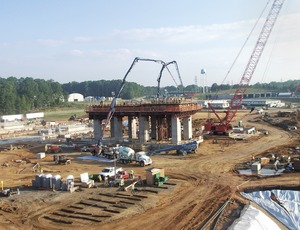
Cheap natural gas is lighting a fire under manufacturing, a sector of the U.S. economy given up for dead as the Rust Belt spread and the so-called service economy became the nation's fallback. Taking advantage of low-cost feedstock, a petrochemical industry boom on the U.S. Gulf Coast is expanding to areas near the great gas-shale beds.
Cheap gas is eating into coal's share of the power industry's fuel market. It is even changing the U.S. from an importer to an exporter of liquefied natural gas as recently constructed LNG terminals are being converted into production plants.
When low-cost products begin rolling out of the new petrochemical plants, they are expected to spark investment in U.S. manufacturing capacity to turn the chemical products into consumer goods.
"The shale-gas play is a fundamental market shift," Fluor Corp. CEO David Seaton told investors at a Credit Suisse briefing in New York City on June 7. "We're in the front end of a $40-billion investment in gas flow, heavily weighted in petrochemicals and gas-to-liquids. It is the beginning of an interesting investment cycle."
Others also find the geographic shift compelling. Philip Asherman, CEO of Houston-based engineer-builder CB&I Co., says that 75% of the firm's new orders in the first quarter of 2012 were in the U.S. "It's a rebalancing of the market," he told the investors. "We see capital flows strong in the next 36 months. There will be a lot of preliminary engineering."
The industry's second coming won't happen overnight, analysts warn. The price of natural gas has fallen to unsustainable levels, hitting a 10-year low in April, and production is being reduced as the price falls below the producers' break-even point of about $3 per million Btu. On June 12, the U.S. Energy Information Administration's Short-Term Energy Outlook forecast an average natural-gas spot price of $2.55 per million Btu, 10¢ over the previous month's forecast. In 2013, EIA projects the spot price will climb to $3.23.
Long-term forecasts are for prices in the $5 to $7 range for the next decade, raising hope for a stability that will encourage investment. "We could see the price come back earlier than we thought," says Bill Utt, CEO of Houston-based KBR. But prices will remain below $6, he adds.
Powering Up
The electric-power sector has been leading the shift to gas for years. Since 1995, 80% of new capacity has been gas-fired units, EIA says.
Fuel switching also is adding to market share for gas. In August 2008, powerplants were swapping coal for gas for almost the first time in U.S. history. The trend has continued monthly since then. For the past three years, switching has grown exponentially, doubling each year, says the Natural Gas Supply Association, Washington, D.C.


Post a comment to this article
Report Abusive Comment